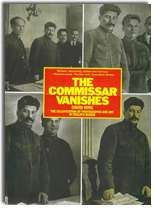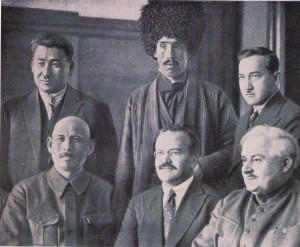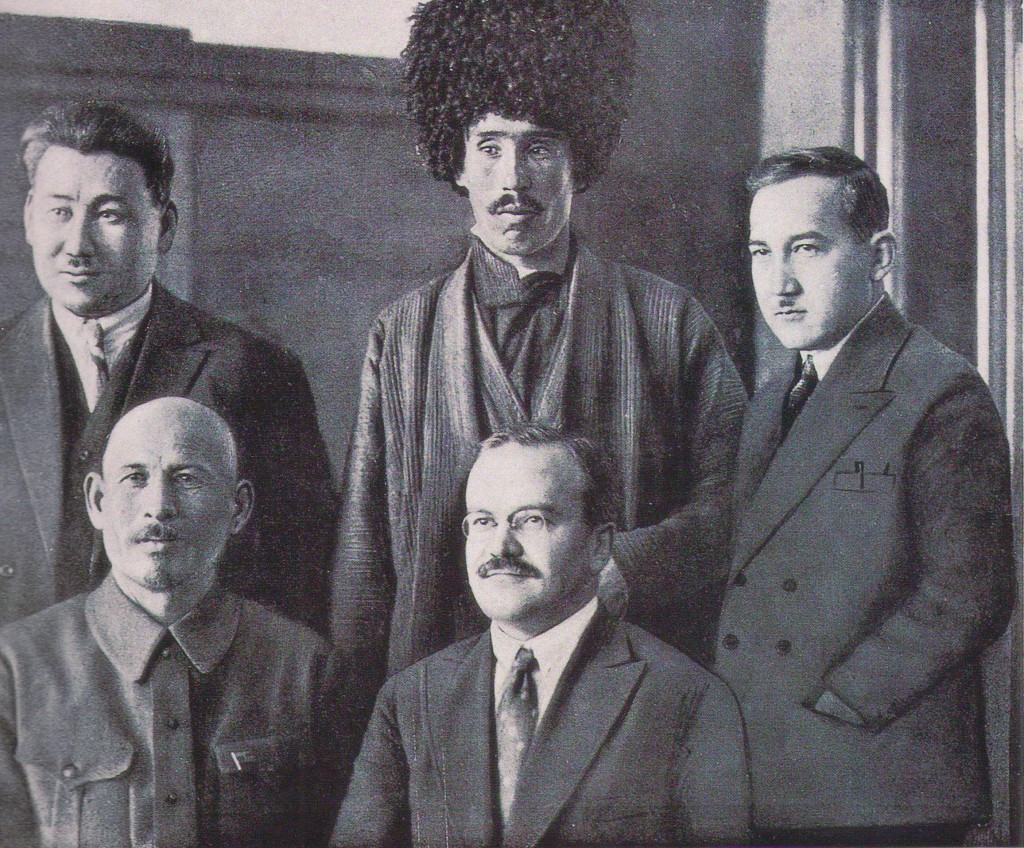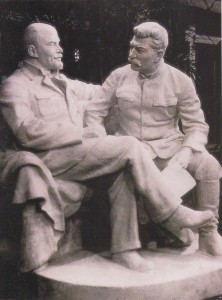The Commissar Vanishes April 19, 2011
Author: Beach Combing | in : Contemporary , trackback After yesterday’s post on cinema gimmicks, Beachcombing found himself wondering about why cinema alone of the great arts seems to prosper under totalitarianism. From there he got all excited about Soviet kitsch and spent an hour in his armchair where he got reacquainted with one of his favourite books of the last couple of years: David King’s The Commissar Vanishes: the Falsification of Photographs and Art in Stalin’s Russia.
After yesterday’s post on cinema gimmicks, Beachcombing found himself wondering about why cinema alone of the great arts seems to prosper under totalitarianism. From there he got all excited about Soviet kitsch and spent an hour in his armchair where he got reacquainted with one of his favourite books of the last couple of years: David King’s The Commissar Vanishes: the Falsification of Photographs and Art in Stalin’s Russia.
Beachcombing feels honour bound to give DK’s classic a push because, the title and particularly the subtitle is just not that promising and might be passed over. Beachcombing would certainly not have shelled out the 30 odd dollars that a second-hand copy now costs if he had been buying it over internet: the original is a decade out of print. But wait! This is not a doctoral student pushing their thesis into print or, for that matter, a professor trying to get tenure by publishing a book on a suitably obscure subject. This is photo-historian David King, one time art editor at the Sunday Times no less, with his archive of over a quarter million Soviet photographs and the spirit of righteous indignation that is the only sensible way to approach the obscenity that was Soviet Communism.
The book itself has far more images than text: in fact, the images even crowd their way into the introduction and the index. Off the top of his head Beachcombing can’t think of any other printed work where the text and images are so well bound together. Usually you read text as an afterthought to images or you flick forward to get to the photographs in a hardback when you are getting bored. Here, instead, you look lovingly at the photographs, read the text, then amazed return to the photographs, usually to work out who killed whom.
Perhaps the trick of this strangely cathartic book is that most of the photographs run together in series. After all, the whole point of the exercise is falsification. So typically DK begins with the original – if he has been able to find it – then pushes on to later ‘reworkings’. This is where the comedy begins. After all, the Soviet Union was a Platonic society – in an Aristotelian world – where no mistakes could be admitted. The result was that if Stalin had been photographed earlier in his life with an individual who became ‘an agent of imperialism’ (and who didn’t?): then the photograph in question could only be published or viewed if the enemy of the state was removed. Hence the constant resizing and redesigning of photos – how they would have loved photo shop!
Beachcombing has included the book cover above, where four figures become, eventually one – naturally Stalin. He’s also put up a photo in a previous post – sorry David – that gives some sense of the book’s spirit. So here he will limit himself to scanning an almost random couple of shots, chosen perhaps because Beachcombing loves unusual headwear. The photograph below is from the 1934 book Ten Years of Uzbekistan. The second photograph comes from the 1935 reprint when the gentleman on the bottom right, Abel Yenukidze had been thrown out of the party. Hence there is some inventive blocking out and a penned in suit pocket. DK goes on to tell the reader that Yenukidze was murdered by the authorities in 1937 with eight members of his family. And look at that ass Molotov smiling…
Beachcombing can’t resist also reproducing this shot of Lenin and Stalin. It belongs to the love-in series where Soviet artists were trying to create a warm relationship between the two leaders in Soviet myth that had been entirely absent in Soviet fact. Beachcombing particularly likes this one because it seems so, well, Village People.





